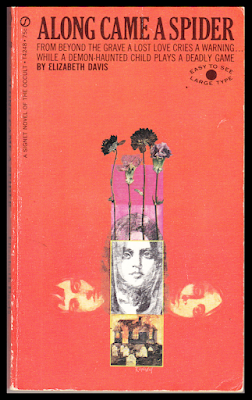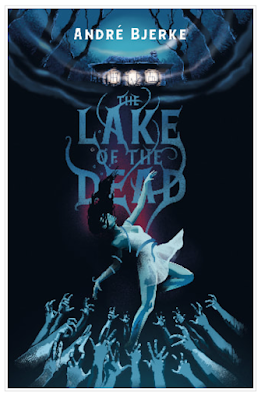CHARACTERS: Initially, Lorie Weir appears to t be the protagonist detective in Murder Up the Glen (1933), but the novel is structured in an unusual manner. In Part One Lorin and the villagers are featured as they all search for Duncan Grant, a gameskeeper who has gone missing then turns out to be the murder victim Lorin found in the highlands. In Part Two a writer, Martin Loan, and his colleague Dr. Lawrence Neal, an Irish physician interested in crime and supernatural, take over as narrator and detective respectively. As the story gets more complex and detailed Loan adds several letters and diary entries to his "manuscript" to offer up alternate points of view and provide eyewitness testimony that he was unable to provide himself. Loan and Dr. Neal take an arduous journey to Fantassich Lodge where they set up temporary headquarters to help the Neil family (distant cousins of the physician) make sense of the murder and clear up whether the ghost might be involved or not.
The Neil family is headed up by Colonel Evan Neil. The others -- Cynthia, a 17 year old preparing for university, and John 14 years-old -- are joined by Neil's two stepchildren Alan and Mary, both under 10 years old. All these supporting characters have their own special scenes with Cynthia eventually taking on a major role as she becomes more and more attracted to Lorin Weir and determined to clear his name. In fact, the youngest boy Alan serves to be crucial to the investigation when he stumbles on the incriminating knife with Lorin's initials in a burn (a large stream) while fishing.
The austere and grim setting with its foreboding landscape dominates the first half of the book. Descriptions of the craggy land, mountains and glens, burns and rivers provide substantial creepy atmosphere. The landscape and geography become like a character unto itself. The inclusion of a gorgeously rendered map (see below & click to enlarge) that serves as the front endpapers in the first edition allows the reader to realize more fully the all-important landscape.
The Neil's maid Mairag and Dugald Cameron, her boyfriend of sorts, will also emerge from the background and take up a majority of the story when Lorin focuses his efforts on proving that Dugald killed Duncan Grant. The comely Mairag was the object of many of the local men's attentions including Grant, the murder victim. Lorin is sure jealousy is the motive. Mairag, of course, denies Duglad had anything to do with the crime pointing out his relatively good nature, despite his temper, he would never kill anyone. However, Dugald becomes surly and often violent in his own denials. The two seem to be protecting each other. Or are their actually protecting someone entirely different? Cynthia is puzzling out all the seeming jealousies and cover-ups and tries to help Lorin see the truth.
Meanwhile, Dr. Neil is out to prove that the ghost is real and that the legends and stories surrounding The Black Walker have some legitimacy. Is it possible that this caped figure is an actual ghost? And what of Daft Jimmy who has been seen wandering the mountainous terrain in his own black cape? This local "half-wit" who spends much of his time herding sheep seems to be part of a crime. Lorin suggests that Daft Jimmy is being exploited and manipulated by an angry, more intelligent man in order to carry out violence and is doing so in a Black Walker get-up.
THE AUTHOR: Colin Campbell was the pseudonym of Douglas Christie (1894-1935) who wrote novels under his own name, his Campbell alter ego and a second pen name, Lynn Durie. According to Hubin's Bibliography of Crime Fiction Dr. Larry Neal, is a series detective and appears in two other mystery novels. The first novel, a frustratingly rare book I am still in search of for over 20 years (!), Out of the Wild Hills (1932) is a mystery with genuine supernatural content. The third and last of the Neal mysteries, Murder on the Moors (1934), I managed to find in a scarce POD reprint edition and will review that one in March.
EASY TO FIND? If you want a hardcover edition -- well, good luck. I found a battered copy a few years ago but recently sold that in my online listings. However, if you don't mind eBooks or digital texts, then you are indeed in luck! I suggest you click here and you will find three different digital versions of Murder Up the Glen, one for Kindle, one in Epub, and one full length PDF. Happy reading!

































